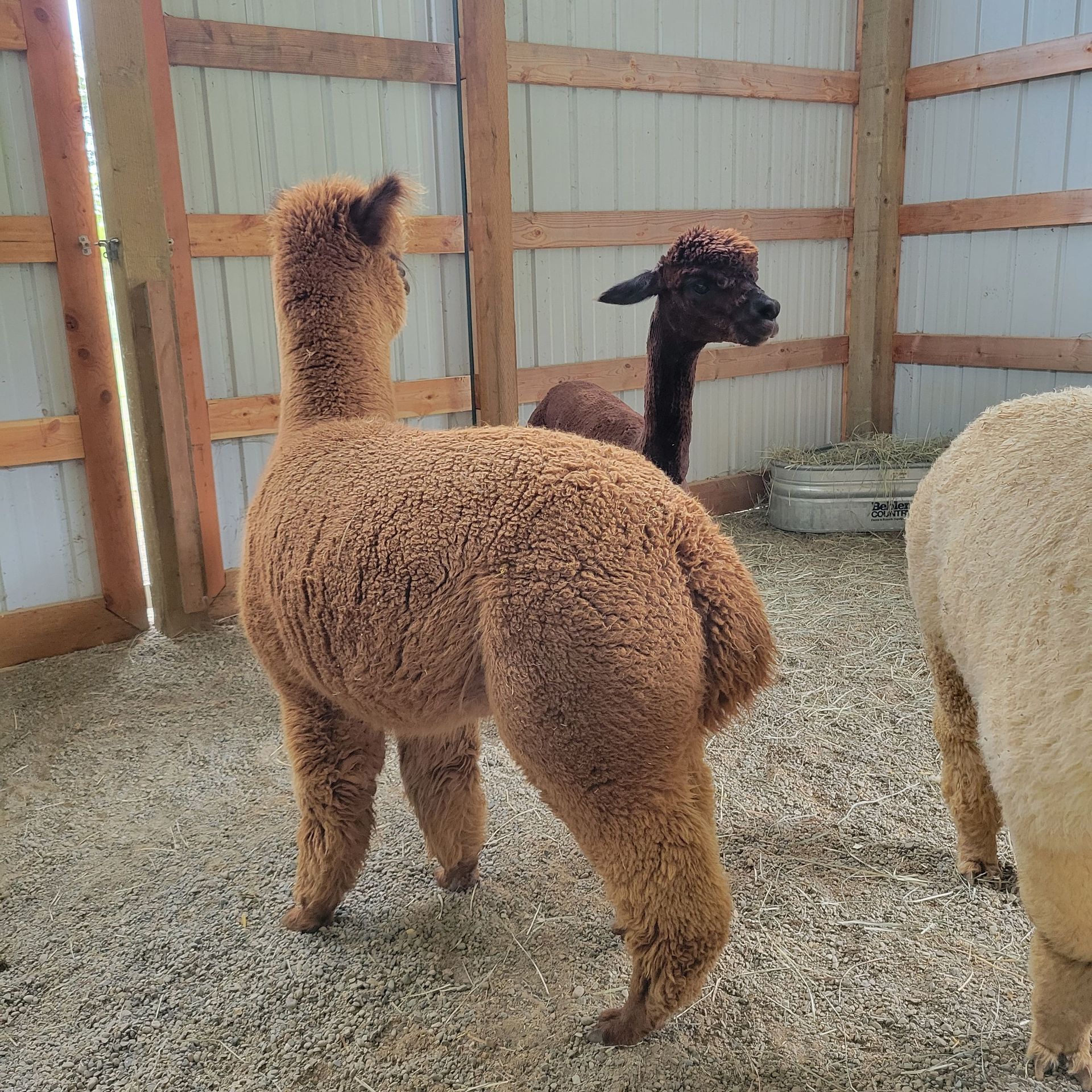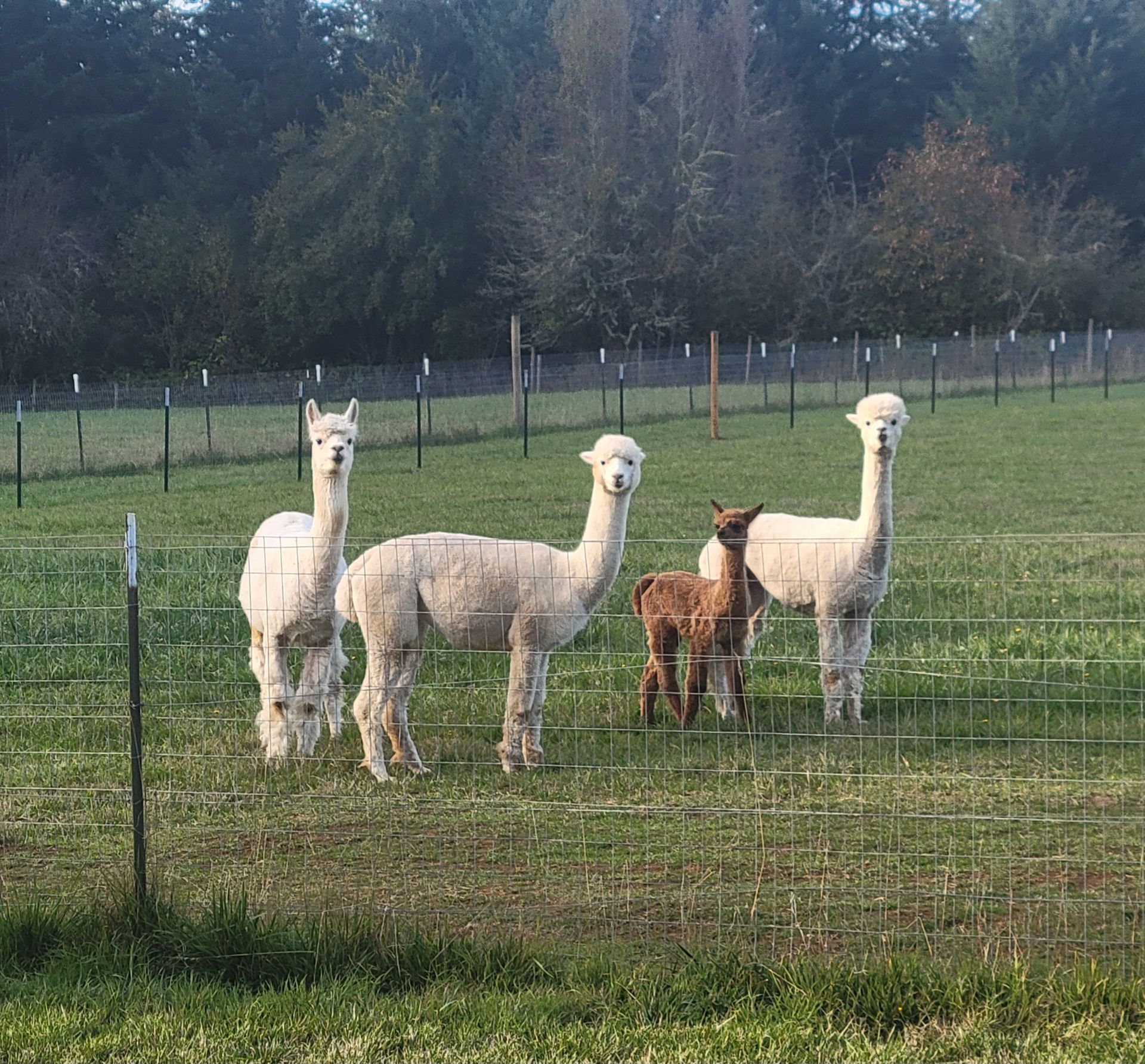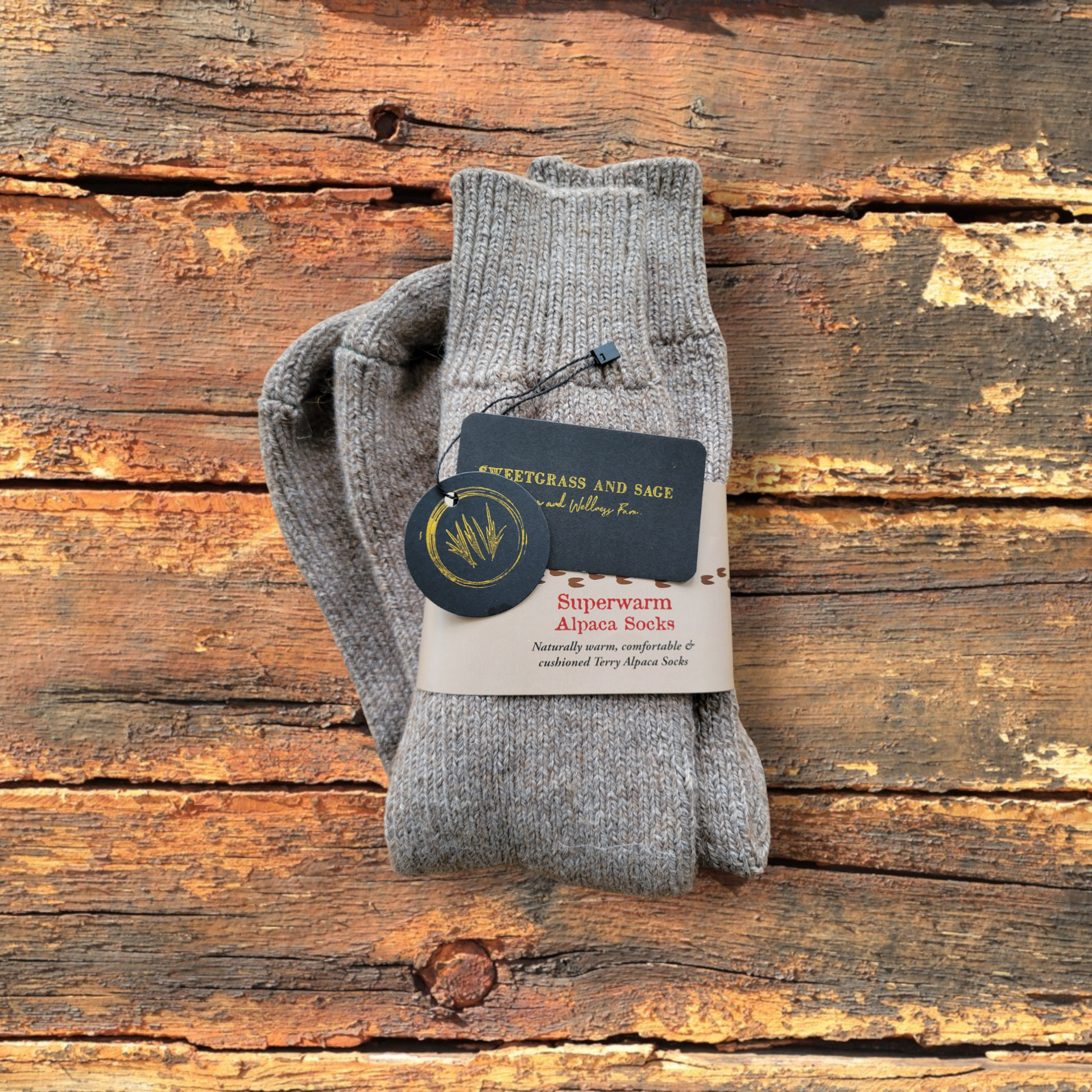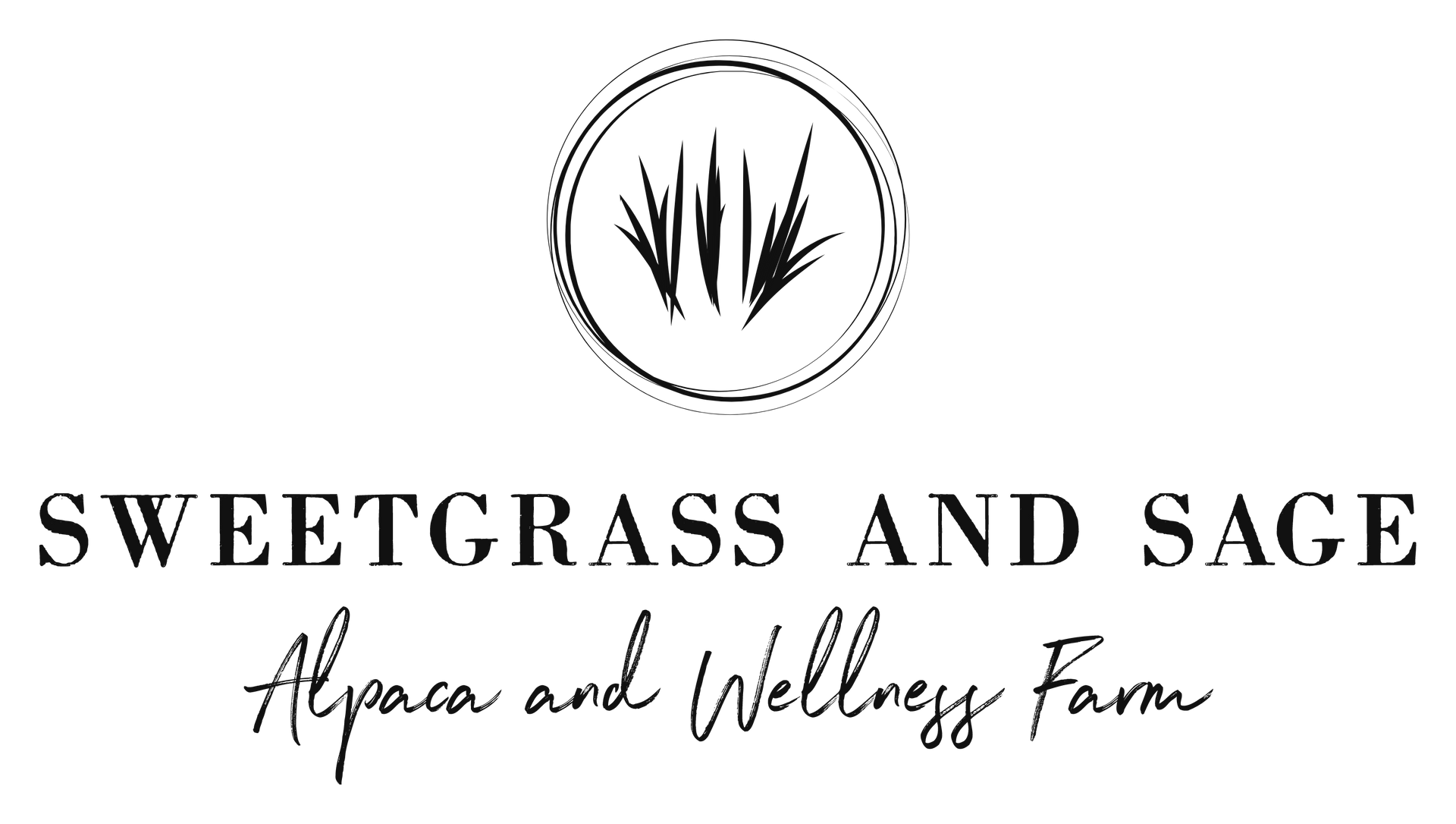That day, you don't want to have...
Cria Birthing
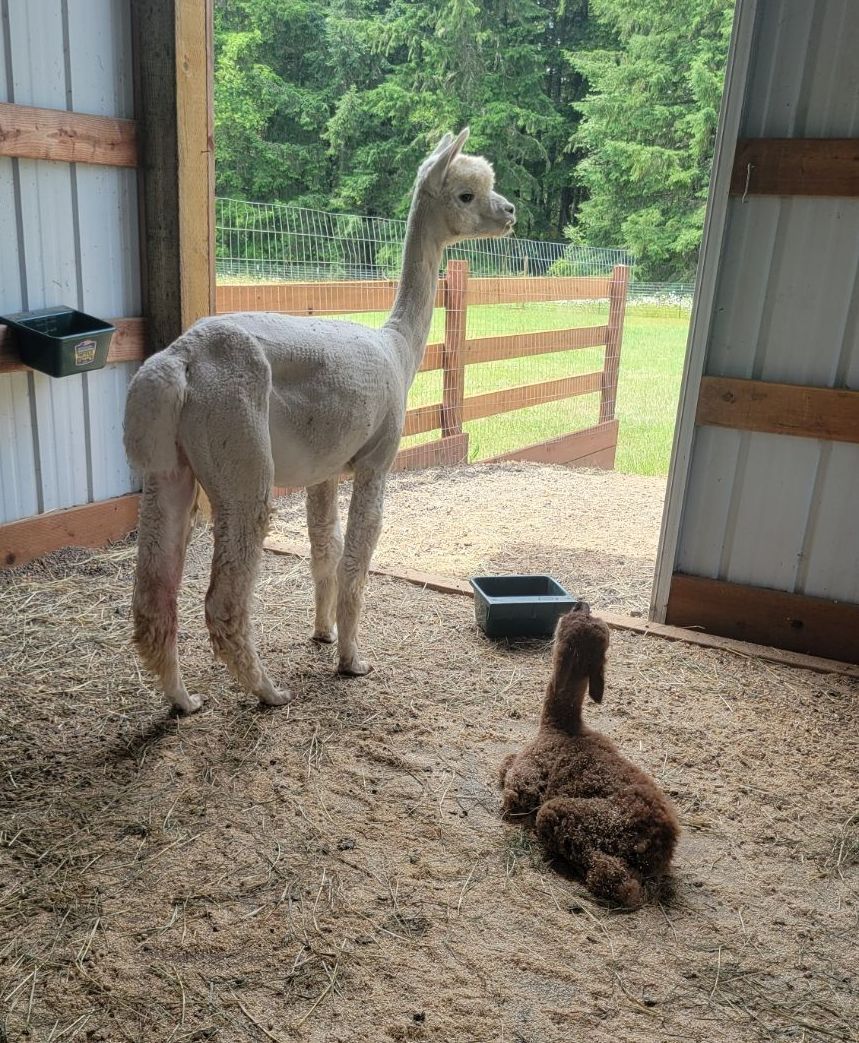
We are newcomers to the world of alpacas. We immersed ourselves fully into this endeavor and occasionally question the wisdom of undertaking such an initiative as we approach retirement. For my wife, retirement is just a few months away.
It was only a couple years ago, when we started with a couple pet boys and here we are a short time later with 8 females, 4 adult males, 2 yearling males and several dams expecting over the next few months. Our new affinity goes beyond the quantity of animals we have on the farm, to the fact that our investment has been focused on acquiring seed stock animals. Maybe ‘that’ is the craziest part of this journey, taking on this type of hobby with little to no experience, didn't think I was a gambler, perhaps just foolhardy.
To our credit, we have taken classes, joined clubs and networked with all of the right people. The amount of information Tina and I have taken in over this short period of time is immense and yet we feel so unprepared for days like today.
I have to say, my personality type is to be prepared. This goes back to when I was child, growing up as a cub scout. Our motto was “Be Prepared” and here I am, decades after my scouting career, still employing that way of life. I have totally earned my patch in alpaca birth preparation. We took a seminar with an amazing vet, who has seen it all in the Alpaca mecca of the Northwest. I have laminated the notes, purchased every possible thing you can need for birthing alpacas and put it in a kit ready to walk out the door for assisting the birth of alpacas, and step in when/if there are signs of distress.
Today was the day… I got the text that one of our girls gave birth and the picture showed a young cria standing next to its mom. I left work just to be there and witness the new life of our very first alpaca in our breeding program, the first birth on our farm and be in the presence of arguable one of the cutest babies in the animal kingdom.
I was nearly 2 hours away at a jobsite in the sticks. Traffic was slow and I felt like a new dad trying to get to the hospital to meet his first child. Tick, tick, tick… Patience Daryn, you will get there!
When I got home all of the anticipation and excitement I had been percolating turned to instant terror when I saw the cria laying on the ground gasping for air. All of my planning and understanding of what to do was gone and I was stricken with paralysis. My instinct was to jump in and do ‘something’ but the training said no, you have to observe. Cria are known to be up and down in the first few hours, they have 30-40 breathes per minute, this is all normal…, but in my heart I knew this was different. I read the laminated information card trying to remember the first few hours, but since we don’t know how long the cria sat in the pasture before Tina found it, I couldn’t pinpoint the hour we were in, and I decided it was time to act.
Cell phone in hand I called mentor number 1 with no answer. I reached out to another alpaca breeder who had seen this before and didn’t get an answer on this call either, but I left a message. As I was reading my queue card once again, trying to manifest the answer, I got a call and sprang into action with my lifeline, well I was hoping for the baby cria’s lifeline! The thermometer revealed very little, Karo syrup gave the little guy a jolt of ‘sit-up’ medicine, but he quickly went down again like a lifeless ragdoll. No, this is NOT good. He struggled to move, slowly becoming less active, one breath, long pause, next breath. With stethoscope on, listening to the heartbeat, then as quickly as I found it, it was gone. I quickly moved the stethoscope around, trying to find it again… but it was gone along with any sign of life, my little guy was also gone. I couldn’t do anything to save him.
I have been through so many versions of trauma in my half century on this planet but this one paralyzed me, I was momentarily in shock, unmoving, unthinking, just defeated. Here I am, the human protector who failed in his first attempt. I have no business doing this! The alpacas on this farm need better than I am able to provide. The dam came back into the barn, smelled him, turned and left. I sat there with this little guy for nearly an hour, the dam never came back, she knew... As grief gave way to intellect, I began going over what happened, analyzing the details of what I could have done better. Should I have…? Maybe if I did ‘that’ better? Surely, I missed something, right?!
Well, it has been 2 days since this event and reading my thoughts on the moment, stirs me and naturally the doubts come back. But, of course, I know there was nothing I could have done, and literally nothing that Tina or I did that caused this. The odds of having an animal die this quickly after birth are slim and yet, somehow this is our journey, this is the universe telling me to listen. Maybe there is a lesson in all of this? I am quiet and still waiting for the answer, hoping…
